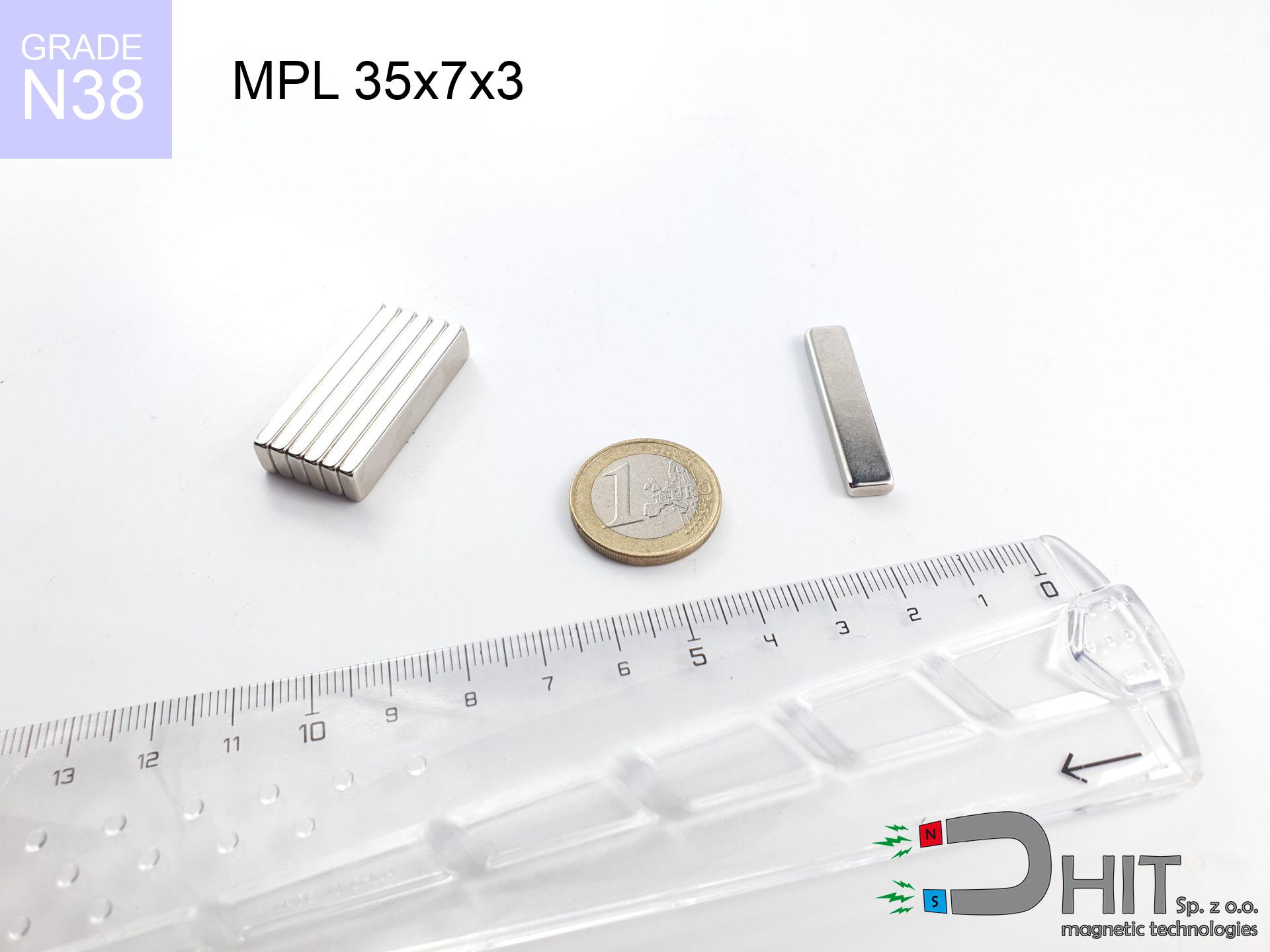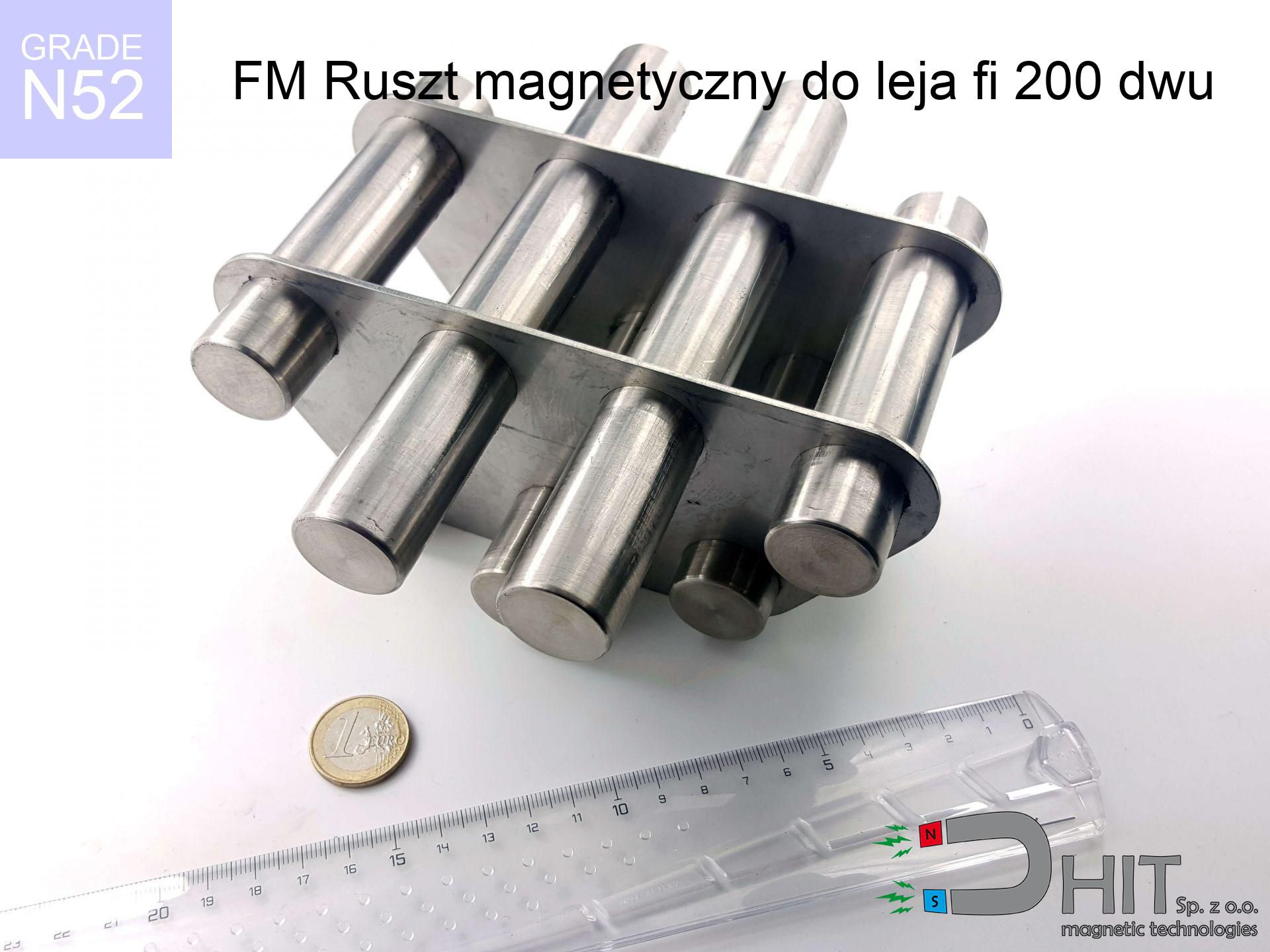MPL 35x7x3 / N38 - lamellar magnet
lamellar magnet
Catalog no 020145
GTIN: 5906301811510
length [±0,1 mm]
35 mm
Width [±0,1 mm]
7 mm
Height [±0,1 mm]
3 mm
Weight
5.51 g
Magnetization Direction
↑ axial
Load capacity
3.71 kg / 36.38 N
Magnetic Induction
285.96 mT
Coating
[NiCuNi] nickel
2.99 ZŁ with VAT / pcs + price for transport
2.43 ZŁ net + 23% VAT / pcs
bulk discounts:
Need more?Need advice?
Call us now
+48 888 99 98 98
alternatively send us a note using
request form
through our site.
Strength as well as form of a neodymium magnet can be analyzed with our
online calculation tool.
Orders placed before 14:00 will be shipped the same business day.
Magnetic properties of material N38
Physical properties of sintered neodymium magnets Nd2Fe14B at 20°C
Shopping tips
Advantages as well as disadvantages of NdFeB magnets.
Besides their durability, neodymium magnets are valued for these benefits:
- They do not lose magnetism, even during nearly ten years – the drop in lifting capacity is only ~1% (theoretically),
- Magnets very well resist against loss of magnetization caused by external fields,
- Thanks to the smooth finish, the surface of Ni-Cu-Ni, gold, or silver-plated gives an modern appearance,
- They feature high magnetic induction at the operating surface, which improves attraction properties,
- Thanks to resistance to high temperature, they are capable of working (depending on the shape) even at temperatures up to 230°C and higher...
- Thanks to freedom in forming and the capacity to adapt to client solutions,
- Wide application in future technologies – they serve a role in computer drives, brushless drives, advanced medical instruments, and modern systems.
- Compactness – despite small sizes they offer powerful magnetic field, making them ideal for precision applications
Disadvantages of neodymium magnets:
- To avoid cracks under impact, we recommend using special steel holders. Such a solution secures the magnet and simultaneously increases its durability.
- We warn that neodymium magnets can lose their strength at high temperatures. To prevent this, we suggest our specialized [AH] magnets, which work effectively even at 230°C.
- When exposed to humidity, magnets start to rust. For applications outside, it is recommended to use protective magnets, such as those in rubber or plastics, which secure oxidation as well as corrosion.
- Limited ability of creating threads in the magnet and complex forms - recommended is casing - magnetic holder.
- Potential hazard resulting from small fragments of magnets pose a threat, when accidentally swallowed, which becomes key in the aspect of protecting the youngest. It is also worth noting that small components of these devices can be problematic in diagnostics medical when they are in the body.
- Higher cost of purchase is a significant factor to consider compared to ceramic magnets, especially in budget applications
Maximum lifting capacity of the magnet – what affects it?
Holding force of 3.71 kg is a result of laboratory testing executed under specific, ideal conditions:
- on a block made of mild steel, perfectly concentrating the magnetic field
- whose transverse dimension is min. 10 mm
- with an ideally smooth touching surface
- with direct contact (no coatings)
- under axial application of breakaway force (90-degree angle)
- at conditions approx. 20°C
Practical aspects of lifting capacity – factors
Holding efficiency is influenced by specific conditions, mainly (from priority):
- Distance (betwixt the magnet and the plate), as even a very small distance (e.g. 0.5 mm) leads to a drastic drop in lifting capacity by up to 50% (this also applies to varnish, corrosion or debris).
- Load vector – maximum parameter is available only during pulling at a 90° angle. The shear force of the magnet along the surface is typically many times smaller (approx. 1/5 of the lifting capacity).
- Element thickness – for full efficiency, the steel must be sufficiently thick. Paper-thin metal restricts the lifting capacity (the magnet "punches through" it).
- Steel type – mild steel gives the best results. Higher carbon content lower magnetic properties and holding force.
- Surface quality – the more even the surface, the larger the contact zone and higher the lifting capacity. Unevenness acts like micro-gaps.
- Thermal environment – temperature increase causes a temporary drop of force. It is worth remembering the maximum operating temperature for a given model.
* Lifting capacity was determined with the use of a steel plate with a smooth surface of suitable thickness (min. 20 mm), under vertically applied force, however under shearing force the holding force is lower. In addition, even a slight gap {between} the magnet and the plate reduces the holding force.
H&S for magnets
Risk of cracking
Despite metallic appearance, neodymium is delicate and cannot withstand shocks. Do not hit, as the magnet may crumble into hazardous fragments.
Serious injuries
Risk of injury: The attraction force is so great that it can result in blood blisters, crushing, and even bone fractures. Protective gloves are recommended.
Adults only
Absolutely store magnets out of reach of children. Choking hazard is significant, and the effects of magnets clamping inside the body are life-threatening.
Combustion hazard
Fire hazard: Rare earth powder is highly flammable. Do not process magnets without safety gear as this risks ignition.
Safe operation
Handle magnets with awareness. Their huge power can shock even professionals. Be vigilant and respect their force.
Nickel coating and allergies
Certain individuals suffer from a hypersensitivity to nickel, which is the common plating for neodymium magnets. Extended handling might lead to dermatitis. It is best to wear safety gloves.
Warning for heart patients
Medical warning: Strong magnets can turn off heart devices and defibrillators. Stay away if you have electronic implants.
Compass and GPS
GPS units and mobile phones are highly susceptible to magnetism. Close proximity with a powerful NdFeB magnet can permanently damage the internal compass in your phone.
Keep away from computers
Very strong magnetic fields can destroy records on credit cards, HDDs, and storage devices. Maintain a gap of min. 10 cm.
Demagnetization risk
Do not overheat. Neodymium magnets are sensitive to heat. If you need resistance above 80°C, ask us about HT versions (H, SH, UH).
Security!
More info about hazards in the article: Magnet Safety Guide.







![AM ucho małe [M8] - magnetic accessories AM ucho małe [M8] - magnetic accessories](https://cdn3.dhit.pl/graphics/products/am-ucho-małe-m8-zud.jpg)

